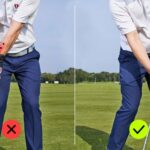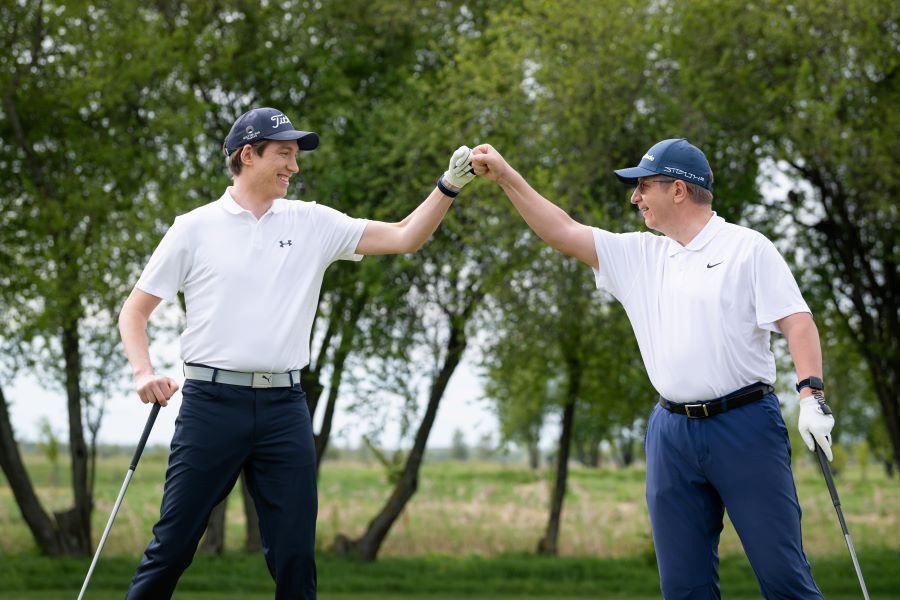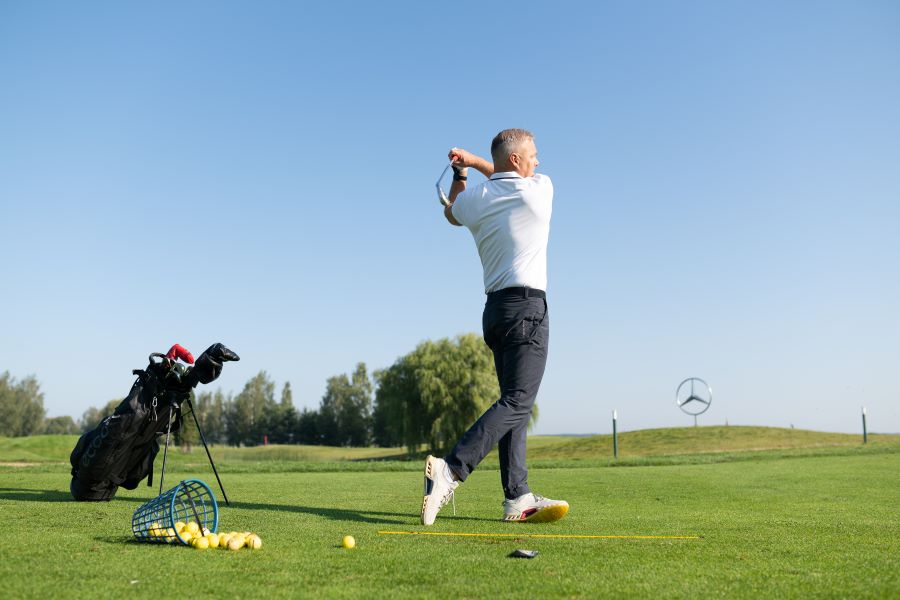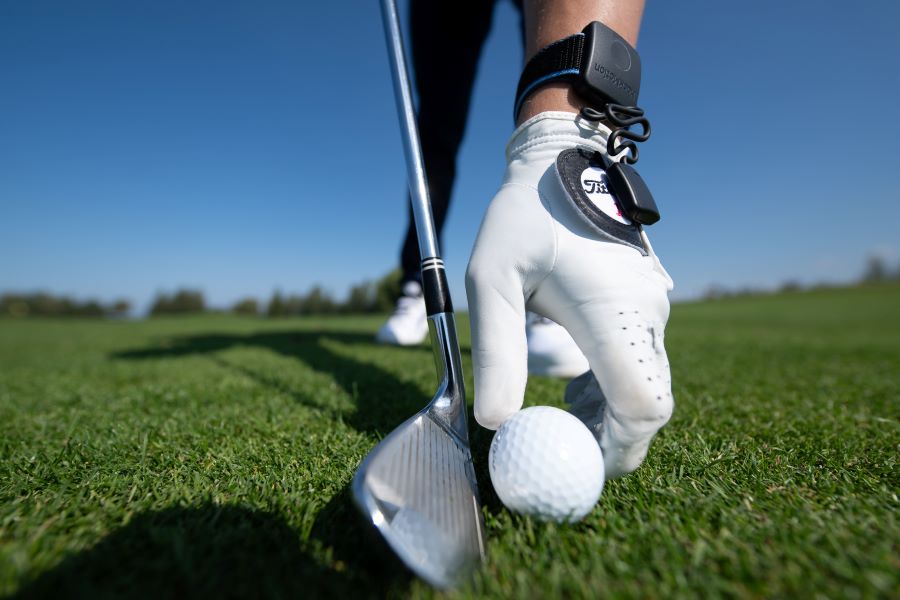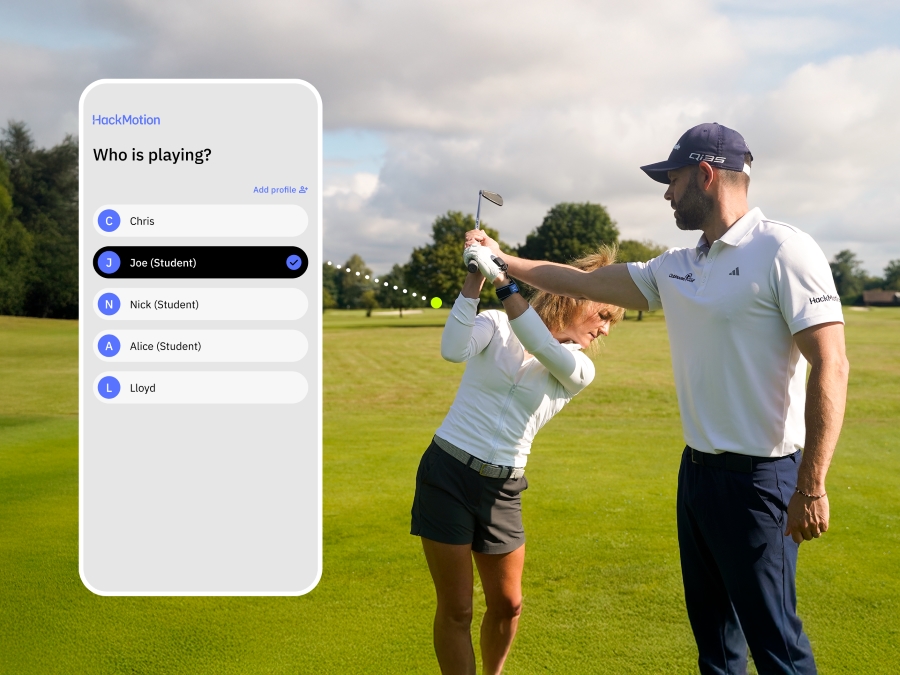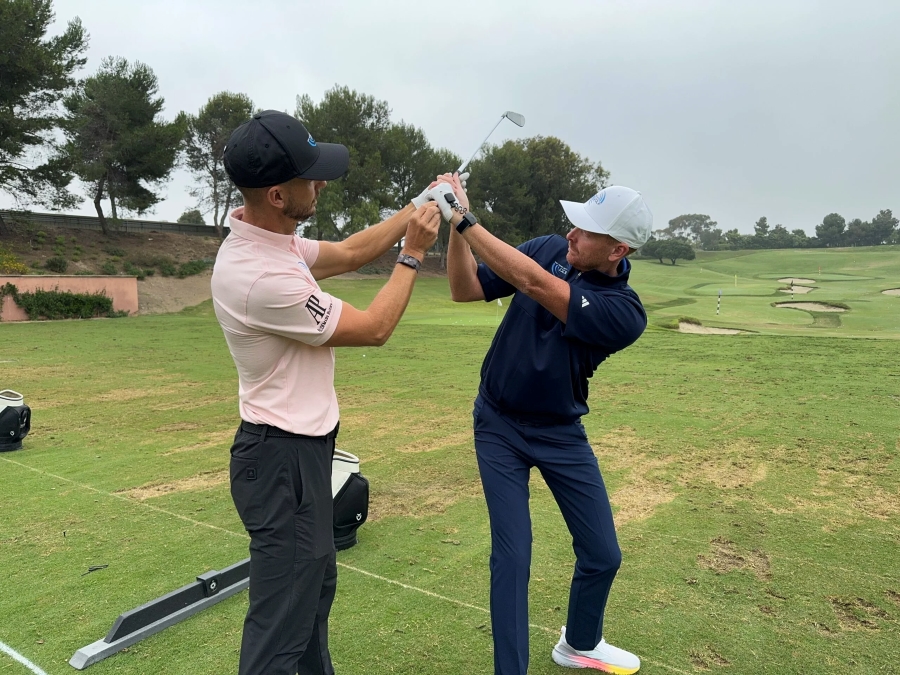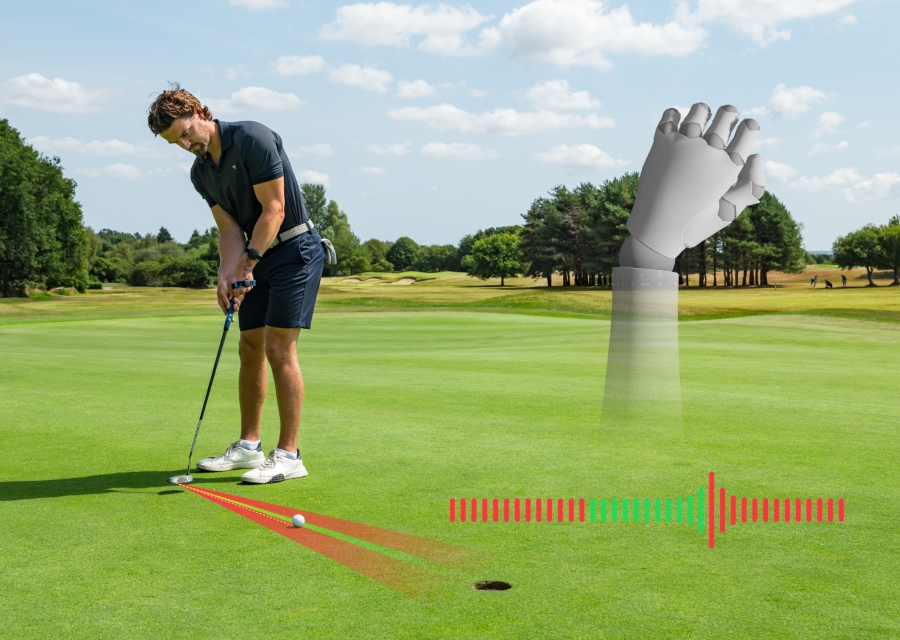How to Get Better at Golf Without Lessons: 15 Proven Tips
Let’s face it, golf lessons can be expensive, time-consuming, and not always helpful, depending on who’s teaching. But that doesn’t mean you’re stuck with your current game.
The truth is, you can get better at golf without lessons. It just requires structure, feedback, and consistent effort.
These 15 tips will show you how to improve your swing, sharpen your short game, and develop better mechanics – all on your own.
From swing research to wrist angle training, every tip here is something you can do without stepping foot into a lesson bay.
Get Better at Golf without Lessons (Key Takeaways)
If you don’t have time to work on your game right now, here are some of the most important tips to take with you.
- You don’t need lessons to improve; what you need is structure, feedback, and consistency.
- The biggest breakthroughs come from learning the difference between feel and real and training what’s actually happening in your swing.
- Tools like HackMotion give you instant wrist-angle feedback so you can fix clubface control, improve impact, and build better mechanics on your own.
- Tracking strokes gained helps you understand where your scoring problems really come from and guides smarter practice.
- A repeatable feedback loop, including video, HackMotion checkpoints, and performance notes, helps you improve without relying on guesswork.
- Short game variety, creative practice, and simple daily reps build scoring skills faster than hitting endless range balls.
Contents
- TOP 15 Tips to Get Better at Golf without Lessons
- 1. Do Some Research
- 2. Practice the Boring Stuff
- 3. Start Tracking Strokes Gained
- 4. Learn the Difference Between “Feel” and “Real”
- 5. Use HackMotion as Your Coach on Your Wrist
- 6. Watch Professional Golf (the Right Way)
- 7. Work on Your Game Every Day
- 8. Know What Impact Looks and Feels Like
- 9. Learn More Than One Short Game Shot
- 10. Build Physical Strength and Stamina
- 11. Practice the Mental Game
- 12. Find the Right Mix of Practice and Play
- 13. Build a Feedback Loop You Can Trust
- 14. Get Fit (and Refit) for Your Clubs
- 15. Know a Core Set of Drills
- Final Thoughts
TOP 15 Tips to Get Better at Golf without Lessons
1. Do Some Research
The fastest way to start getting better on your own is to understand why things go wrong. If you don’t know what causes a slice or what clubface at impact should look like, start there.
Read books like Ben Hogan’s Five Lessons, watch slow-motion swing breakdowns on YouTube, and study modern instructors you align with. You can also have HackMotion diagnose issues in your golf swing simply by taking some swings and collecting data.
You don’t need to master biomechanics, but you do need to understand:
- The relationship between swing path and clubface.
- How impact position affects ball flight.
- What wrist conditions (flexion, extension) do to the face.
Once you understand those, you’ll start making swing changes with a purpose instead of just guessing.
When you’re ready for feedback from a pro, use our Golf Coach Map to find a golf coach near you.
2. Practice the Boring Stuff
Everyone wants to hit driver, but the players who get better are the ones who spend 15 minutes perfecting their grip, alignment, and setup. Watch pros on the range – they don’t “just start hitting.” They:
- Use alignment sticks
- Check their takeaway position
- Rehearse transitions
- Make slow-motion reps
Build a 10-minute routine built into your practice around grip, setup, and takeaway. It’s repetitive, but that’s the point.
3. Start Tracking Strokes Gained
Strokes gained analysis (via apps like Arccos, DECADE, or even a spreadsheet) shows you which part of your game is hurting you most.
You may find that for a 15 handicapper, you are actually putting like a 5 handicapper but driving like a 25 handicapper.
This data tells you where to focus your practice. It’s like having a coach who knows your tendencies. The most important benefit of tracking strokes gained is a clear plan of what to work on when you get to the driving range.
Use your time wisely.
If coaching becomes part of your plan, here’s how to find a good golf instructor so you don’t waste time or money.
4. Learn the Difference Between “Feel” and “Real”
One of the biggest reasons golfers struggle to improve on their own is that feel lies. If you’ve ever seen professionals like Justin Rose working on drills, you’ll see they exaggerate things just to get the feel down.
What you think your swing is doing and what it’s actually doing are rarely the same thing.
You may feel like your wrists are flat at the top, but video or HackMotion data might show that you’re adding extension. You may feel like your hands are ahead at impact, but the real position shows a flip.
This mismatch is why many golfers stay stuck even when they think they’re practicing the right things.
Here’s how to fix it:
- Record your swing face-on and down-the-line once a week.
- Compare the “feel” of the swing to what actually happened.
- Use HackMotion to verify wrist positions at the top and impact.
- Build drills around the mismatch. If your real impact position doesn’t match what you felt, you train until the two line up.
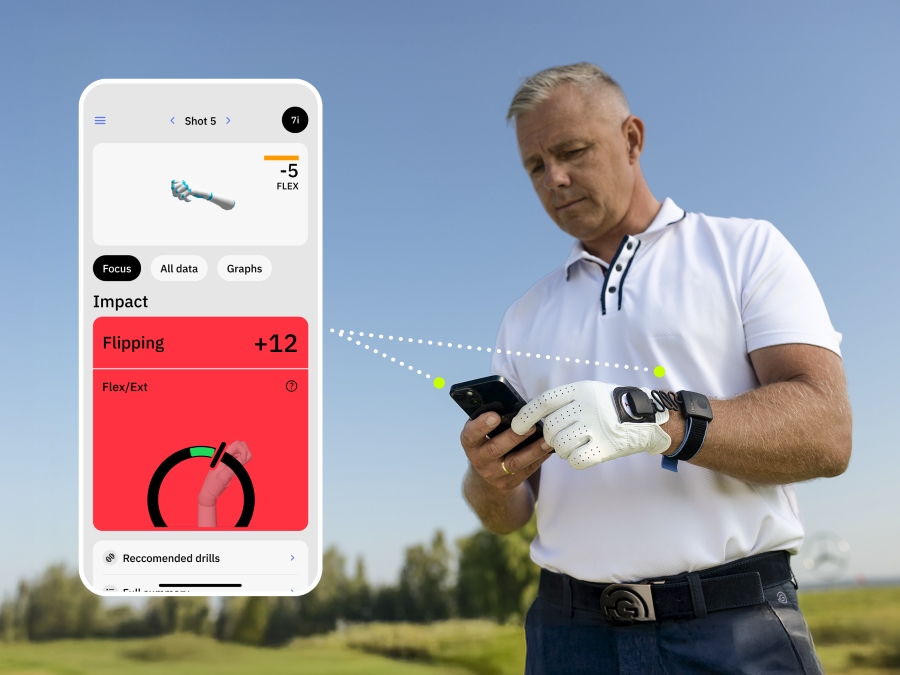
5. Use HackMotion as Your Coach on Your Wrist
One of the hardest parts of practicing without a coach is that you can’t see what your wrists are doing in the swing, and the wrists control the clubface more than anything else.
HackMotion gives you instant feedback on your wrist angles so you’re not guessing. You’ll know right away if:
- Your lead wrist is adding loft at impact.
- You’re losing structure at the top from excess extension.
- Your release pattern is inconsistent.
- Your putting stroke has extra wrist movement you can’t feel.
Instead of relying on feel, HackMotion shows you the real motion in real time.
With audio feedback and green-zone checkpoints, you can train your wrist angles the same way a coach would guide you, but on your own schedule.
6. Watch Professional Golf (the Right Way)
Most people watch golf for entertainment. If you want to get better, study it.
When you watch the professionals look at things like their pre-shot routines, where they miss (pro miss = short or fat side, not short-sided), how they manage risk, their pace, and rhythm.
You’ll start to learn things like pros rarely take risky shots, their short games are planned and not improvised, and their putting routine rarely changes even after misses or on days they struggle.
7. Work on Your Game Every Day
Working on your golf game every day is great, but for most golfers, it’s not realistic.
Here are a few ways you can incorporate some kind of golf practice into your day without having to schedule a complete practice session.
- 5 minutes rehearsing takeaway in a mirror.
- 10 putts on a mat with HackMotion’s putting metronome.
- Read a page of a mental game book.
- Practice chipping with different clubs in the backyard.
Daily reps – even tiny ones – compound over time.
8. Know What Impact Looks and Feels Like
Impact is the most important part of the golf swing. Most amateur golfers have no idea what it should look or feel like.
Working with HackMotion can help you learn the proper position at impact and your hand and wrist position.
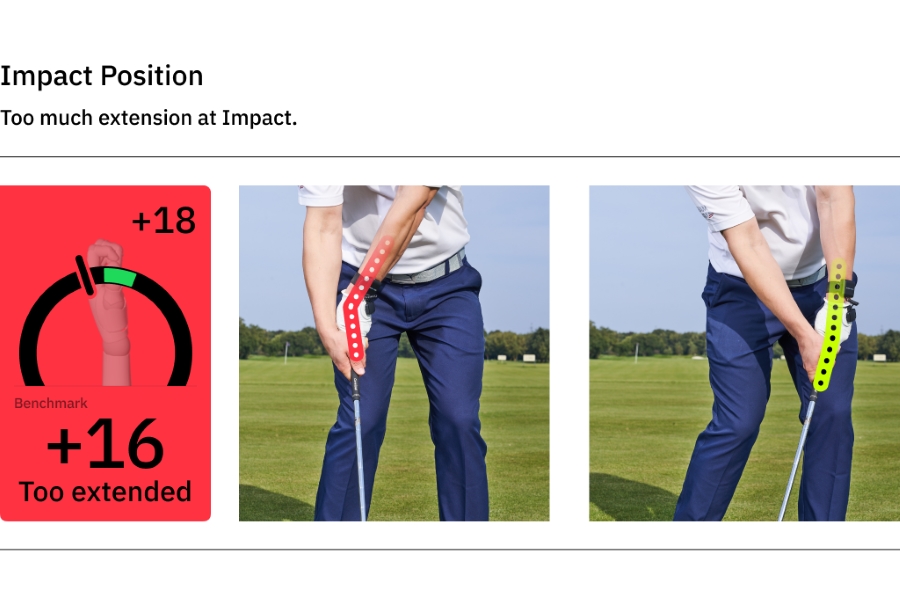
Here’s what great impact typically includes:
- Hands slightly ahead of the clubhead
- Shaft leaning forward
- Lead wrist in flexion (bowed)
- Trail wrist in extension (cupped)
- Clubface square to path
If you’re still trying to “lift” the ball, you’re stuck in the wrong pattern.
A great way to train this is with HackMotion’s real-time feedback at impact. You’ll know immediately if your wrist angles are in range or not.
9. Learn More Than One Short Game Shot
To get good at golf without lessons you need to have more than one short game shot. Having a pitch and a chip shot you can hit will help with scoring and improve decision making on the course.
When making adjustments from one short game shot to another pay attention to your wrist position.
Ultimately, you’ll want to work on the following:
- A low runner with an 8-iron.
- A medium chip with a PW or GW.
- A high, soft shot with a LW.
- Bump-and-run options from bad lies.
- Toe-down chips for tight lies.
10. Build Physical Strength and Stamina
Better athletes play better golf.
You don’t need to train like Rory, but you should focus on gaining core strength through planks, bridges, and weighted rotations. In addition, it’s worth working on core mobility and walking endurance.
Even 20 minutes, three times a week, can improve your posture, consistency, and control.
Want to add 5–10 yards without a swing change? Build a stronger body. It pays off, especially on the back nine when most amateurs fall apart.
11. Practice the Mental Game
With or without taking golf lessons you can work on your mental game. Your swing doesn’t always fall apart because you’re a bad golfer, it falls apart because your brain freaks out.
Here’s how to train your mind:
- Visualization: Before every shot, see the shape and trajectory.
- Positive self-talk: Replace “don’t miss left” with “start it on the right edge.”
- Reframing mistakes: A ball in the water doesn’t ruin a hole. Reset and limit damage.
Still unsure if you need a coach now or later? Read Are Golf Lessons Worth It? to decide based on your goals and budget.
12. Find the Right Mix of Practice and Play
Only playing? You won’t improve. Only practicing? You won’t know what holds under pressure.
Here’s a rule of thumb:
- If you play 2x a week, practice 2x a week.
- Practice doesn’t have to be long, just focused.
Use 30-minute sessions to work on what your last round exposed. Struggle with bunker shots? Go hit 40 of them. Missed putts inside 6 feet? Get on the putting mat.
If you want to go even deeper, use HackMotion to measure what changes under pressure. Are your wrist angles different on the course than in practice? That could be the next step that you need to work on.
13. Build a Feedback Loop You Can Trust
When you’re improving without a coach, the biggest challenge isn’t effort it’s feedback. Most golfers rely solely on ball flight, which is helpful but not enough to make consistent changes.
To improve faster, you need a simple, repeatable feedback loop:
- Use video to check positions at setup, takeaway, and the top.
- Use tools like HackMotion to verify wrist angles so you’re not guessing.
- Track performance with strokes gained so you always know what’s getting better (or worse).
- Write one note after every practice session about what worked and what didn’t.
HackMotion lets you work on this using built-in drills, including the Top Drill:
Top Drill in HackMotion
Train your top position by mastering optimal wrist angles. Challenge yourself to reach the ideal wrist position during a full-speed backswing.
HackMotion Top Drill – Step by Step
- Take your normal setup with HackMotion on.
- Make a full-speed backswing.
- Pause briefly at the top and check if you landed in the green zone.
- Swing down smoothly, keeping that same wrist structure.
- Repeat until you can hit the correct top position without slowing down.
14. Get Fit (and Refit) for Your Clubs
Even if you are taking golf lessons you have to make sure you have the right golf clubs in your hands.
You don’t need to buy new clubs every year, but you do need to make sure your clubs still match your swing.
Check loft gaps, monitor spin and launch and make sure you identify issues that are swing related and those that are equipment related.
15. Know a Core Set of Drills
Golf is about fixing your bad habits faster. Knowing great golf drills is a good way to do this.
Inside the HackMotion app there are drills for both long game and short game, here are a few others you should keep in mind when you are working on your game.
Drill 1: HackMotion Release Drill
Trains correct wrist position at impact in a short, repeatable motion.
HackMotion Release Drill – Step by Step
- Address ball and take a shorter swing.
- Swing from P6 to impact.
- Keep hands ahead of the ball at impact.
- Use HackMotion to confirm correct wrist flexion, green zone (~10–20°).
- Repeat 10–15 times, then progress to full swing.
Drill 2: Flexion / Extension Putting Drill
Stabilize your wrist angles to improve loft control and roll consistency.
HackMotion Putting Flexion / Extension Drill – Step by Step:
- Set up over a 6–10 ft putt with HackMotion on.
- Focus on keeping wrist flexion/extension within 2° during stroke.
- Review the graph after each putt.
- Repeat until movement is consistently controlled.
Drill 3: Motorcycle Drill
The most popular wrist action drill in golf uses this movement to help square the clubface at impact.
HackMotion Motorcycle Drill – Step by Step:
- Address the ball as usual.
- As you begin your downswing, gradually add wrist flexion so that by the time the club is parallel to the ground (P6), you’ve achieved your desired wrist bend.
- Maintain that flexion into impact, then release naturally through the finish.
- Start slowly, then increase speed while retaining proper angles.
- Practice while hitting golf balls, but also work on this drill by completing the motion and not hitting shots.
- Find your “just right” amount of flexion; too little or too much can cause mishits.
Final Thoughts
You don’t need a swing coach or weekly lessons to become a great golfer.
What you need is structure, feedback, and discipline.
Use technology like HackMotion to guide your practice and eliminate guesswork. Build a system of practice routines, drills, and performance tracking. Focus on key mechanics, especially impact and short game wrist angles.
Go hit the range with a plan. Use HackMotion to train your swing like the pros, and if you ever want extra help, check our golf coaches near you to find the right coach for your game.





